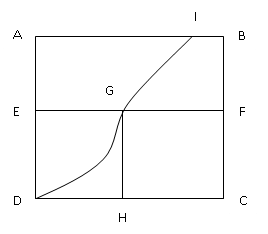This set of Food Engineering Multiple Choice Questions & Answers (MCQs) focuses on “Unit Operations – Dehydration-1”.
1. Statement 1: Drying is used for preservation of food.
Statement 2: Convective drying is indirect drying and conductive drying is direct drying.
a) True, False
b) True, True
c) False, False
d) False, True
View Answer
Explanation: Drying is used for preservation of food as the removal of moisture helps it stay longer. Conductive drying is indirect drying and Convective drying is direct drying.
2. On wet basis, the denominator stays constant whereas in moisture content on dry basis, the denominator changes.
a) True
b) False
View Answer
Explanation: Wet basis involves the amount of moisture content also in the denominator which at different times will be different. Whereas, in dry basis analysis, the denominator is only the weight of the solid. Hence it does not change. Therefore, the correct sentence is – On dry basis, the denominator stays constant whereas in moisture content on wet basis, the denominator changes.
3. Moisture on dry basis cannot be more than a hundred percentage.
a) True
b) False
View Answer
Explanation: In dry basis analysis, the denominator is only the weight of the solid. Hence it can be lesser than the overall moisture content which is the numerator. ((Weight of moisture present at any time)/(Weight of dry solid))
4. 
The x- axis is the moisture content on dry basis. The y-axis is the equilibrium moisture content.
Which of the following shows Bound moisture content?
a) AIEG
b) GIBF
c) GFHC
d) EGHD
View Answer
Explanation: AIEG represents the bound moisture content.
5. The EMC-RH data is fitted to Henderson’s equation. Which of the following is true about the relative humidity with respect to food technology terminology?
a) It is also called water activity
b) It is irrelevant with respect to food technology
c) None of the mentioned
d) All of the mentioned
View Answer
Explanation: Relative humidity is also called water activity in food technology.
6. Drying rate curve is plot between _____ and _____
a) Critical moisture content, critical humidity
b) Critical moisture content, drying rate
c) Critical humidity, drying rate
d) Moisture content, drying rate
View Answer
Explanation: Drying rate curve is plot between Moisture content and drying rate.
7. The point where the constant drying period changes to falling rate period is called _____
a) Equilibrium moisture content
b) Critical moisture content
c) Critical humidity
d) Bound moisture content
View Answer
Explanation: The point where the constant drying period changes to falling rate period is called Critical moisture content.
8. Which of the following denotes gas phase mass transfer coefficient?
a) Sherwood number
b) Lewis number
c) Schmidt number
d) None of the mentioned
View Answer
Explanation: Lewis number denotes gas phase mass transfer coefficient as the measurement of gas phase mass transfer is not that easy and needs to be depicted by a dimensionless quantity.
9. Statement 1: Removing of moisture content for grains in the food industry follows the thin layer model of drying bed.
Statement 2: The model for removing moisture from grains is computerized to find out the exact amount of time of exposure of grains for the removal of moisture.
a) True, False
b) True, True
c) False, False
d) False, True
View Answer
Explanation: Removing of moisture content for grains in the food industry follows the thin layer model of drying bed. The model for removing moisture from grains is computerized to find out the exact amount of time of exposure of grains for the removal of moisture.
10. What does the thin layer model of drying beds in drying of grains depend on?
a) Temperature of air
b) Air flow
c) Initial moisture content
d) All of the mentioned
View Answer
Explanation: Thin layer model of drying beds in the drying of grains depends on all of the mentioned points.
11. Cabinet tray dryers are not very effective as they do not completely strip off the moisture content from the food item. Hence, they need to be combined with another dryer for effective results.
a) True
b) False
View Answer
Explanation: Cabinet tray dryers are not very effective as they do not completely strip off the moisture content from the food item. Hence, they need to be combined with another dryer for effective results.
12. Statement 1: Cabinet tray dryers are used for storing grains.
Statement 2: Cabinet tray dryers are used for low cost foods.
a) True, False
b) True, True
c) False, False
d) False, True
View Answer
Explanation: Bin dryers are used for storing grains. Cabinet tray dryers are not very effective as they do not completely strip off the moisture content from the food item. Hence, they’re used for low cost foods.
13. Tunnel dryer is only a continuous version of a cabinet tray dryer.
a) True
b) False
View Answer
Explanation: Tray dryers are operated under batch conditions. Tunnel dryers just move these trays while hot air is simultaneously supplied.
Sanfoundry Global Education & Learning Series – Food Engineering.
To practice all areas of Food Engineering, here is complete set of 1000+ Multiple Choice Questions and Answers.
If you find a mistake in question / option / answer, kindly take a screenshot and email to [email protected]
- Check Agricultural Engineering Books
- Practice Agricultural Engineering MCQs
- Apply for Agricultural Engineering Internship
- Check Food Engineering Books
